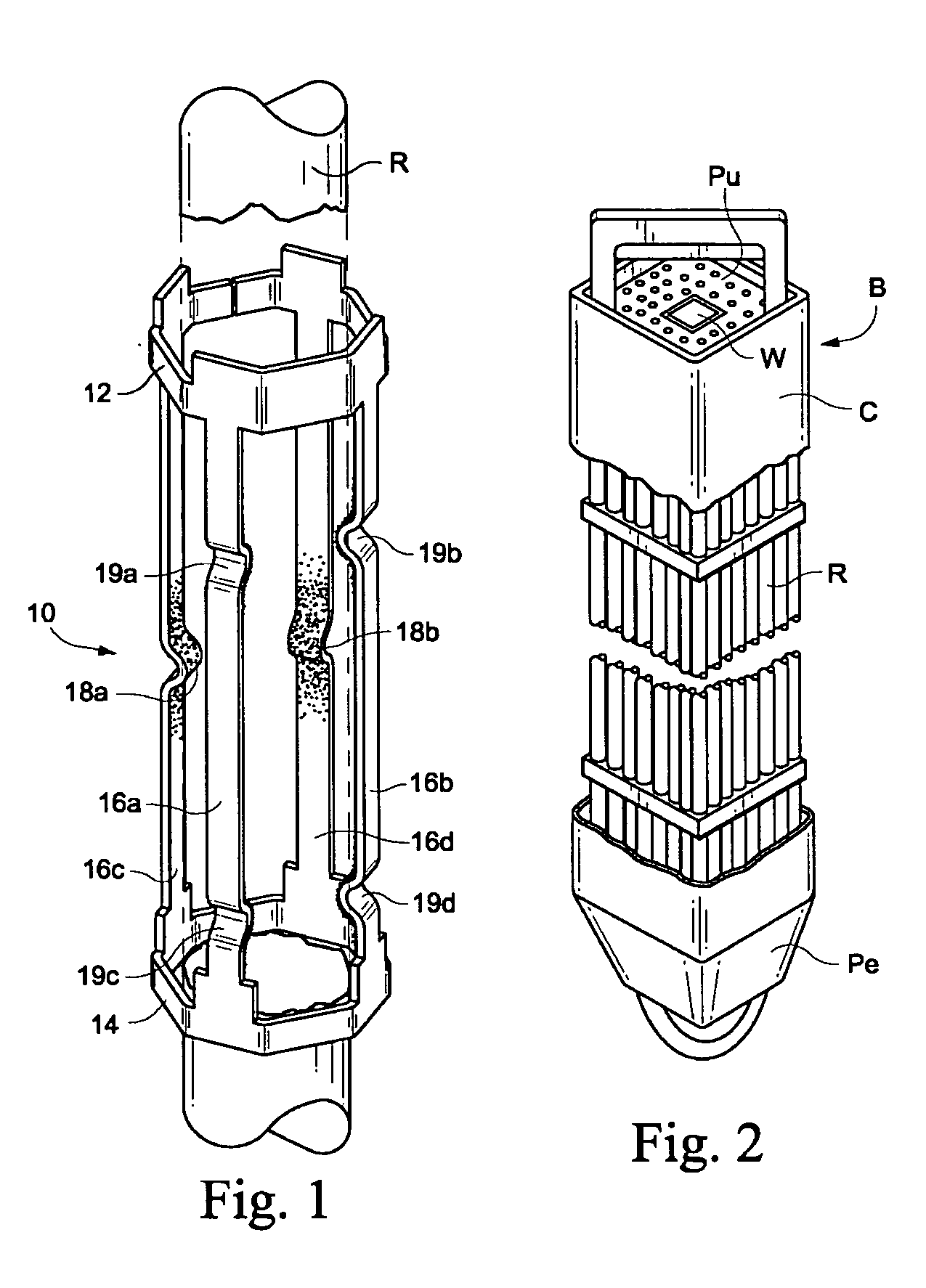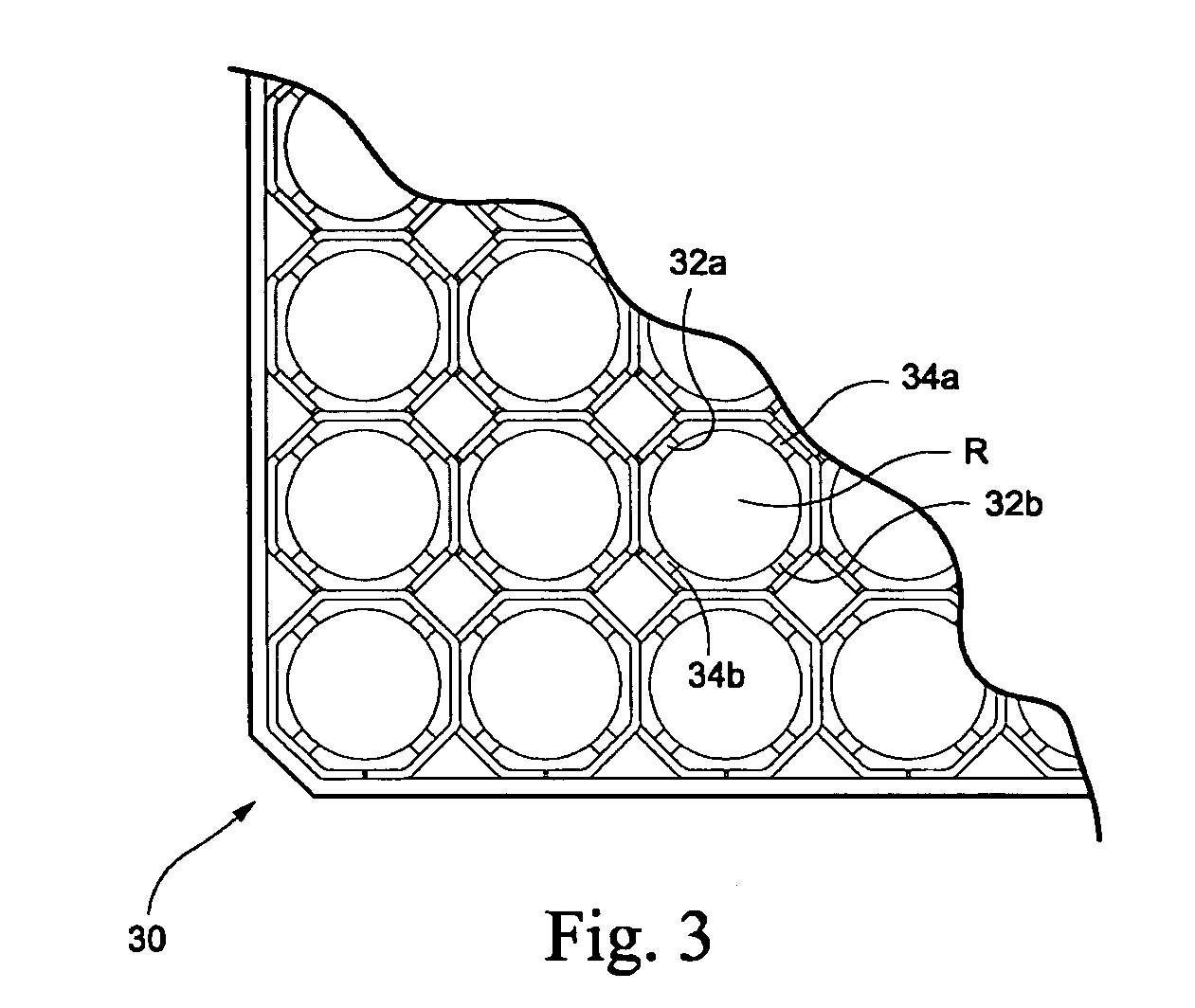Non shadow forming spacers and hardware for a BWR fuel assembly
a fuel assembly and shadow forming technology, applied in the field of components, can solve the problems of increasing the formation of corrosion oxide on the zircaloy cladding, affecting the useful life of alloys, and affecting the efficiency of bwr fuel assembly,
- Summary
- Abstract
- Description
- Claims
- Application Information
AI Technical Summary
Benefits of technology
Problems solved by technology
Method used
Image
Examples
example 1
[0023] The results of in-reactor experiments have confirmed that shadowing can be substantially reduced or eliminated by applying one or more coatings on adjacent components that cause the components to be compatible with the zirconium alloy. In order to demonstrate the effectiveness of the anti-shadowing technique according to the invention, a number of different alloys and coatings in close proximity to the Zircaloy were studied to determine their net effect on shadow behavior. The test matrix included three zirconium alloys with zirconium oxide coatings. Two of the samples were plasma-sprayed at three different thicknesses on the coupons (1, 3 and 5 mils). The ends of the coupons were then uncovered. Another specimen used a zirconium oxide coating by a sol-gel process. An Inconel X-705 spring was positioned adjacent to that specimen to determine whether the coating would stop the shadow expected from the spring. The capsule was removed from the reactor and subjected to post-irrad...
example 2
[0024] For purposes of comparison, the foregoing experiment placed Inconel, Nitronic, Zircaloy and Platinum coupons next to sections of different types of fuel cladding. Measurable shadows were created on the cladding by both Platinum and Inconel. However, some of the Inconel coupons had been additionally coated with about 4 mils of zirconium oxide and these specimens showed no measurable shadow.
PUM
 Login to View More
Login to View More Abstract
Description
Claims
Application Information
 Login to View More
Login to View More - R&D
- Intellectual Property
- Life Sciences
- Materials
- Tech Scout
- Unparalleled Data Quality
- Higher Quality Content
- 60% Fewer Hallucinations
Browse by: Latest US Patents, China's latest patents, Technical Efficacy Thesaurus, Application Domain, Technology Topic, Popular Technical Reports.
© 2025 PatSnap. All rights reserved.Legal|Privacy policy|Modern Slavery Act Transparency Statement|Sitemap|About US| Contact US: help@patsnap.com



